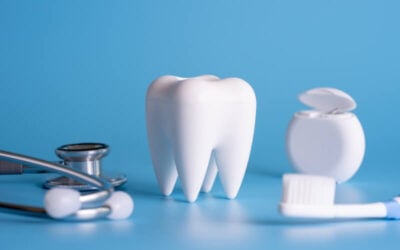Fluoride and IQ: Is There a Link?
Fluoride and IQ: Is There a Link?

Fluoride. We’re familiar with the word, but do we know exactly what it is?
Fluoride is the main component of fluorite (from the Latin Fluere meaning to flow). It’s the easily dissolved raw crystal form of fluorine, which is extremely colourful: most commonly clear greens and purples, but also black, blue, red, yellow, white and clear. As well as clear, fluorite comes in a variety of colours: black, brown, blue, green, purple, red, yellow, and white. It can present as multi-banded, or a single transparent colour.
Throughout history, the most prized has been the multi-coloured rainbow fluorite. Its softness and beauty allowed the Ancient Egyptians to carve it into beautiful beads, scarabs and statuettes of gods. The ancient Romans highly prized the multi-banded varieties, and carved them into drinking vessels, cups, vases and bowls for the wealthiest of its citizens. The Ancient Chinese also used it for decorative purposes, often using the green fluorite instead of jade for drinking vessels – all of these cultures being completely unaware of its toxicity when consumed from.
Wearing or handling it is safe; ingesting it is not.
Goddesses associated with Fluorite are the Hindu Goddess of the Spoken Word Vac, and the Roman Goddess of Wisdom and War, Minerva.
Fluorite is found worldwide. Some better-valued sources come from England, Germany, India, Russia, USA, Canada, Spain, Peru and Mexico. Rare, bright blue, as well as pink are found in France; Switzerland also has pink; and China has recently produced beautiful large, sharp, bright blue, cubic fluorite.
It glows under ultraviolet light, and is one of the first substances studied for its natural fluorescence – the term comes from this mineral.
Known as the ‘Genius Stone,’ fluorite crystal has come to represent the highest of mental states and achievements, and is claimed to boost aptitude, discernment, and the absorption of new information. Apparently its energy stimulates the electrical charge of brain cells, which draws in more life force (prana) because it encourages both hemispheres to work in harmony and balance. It is considered a consciousness expander, advancing greater mental, spiritual and psychic awareness, and stirring creativity. It is said that it can clear murky auric energies from all layers of the auric body, and is excellent for pain; particularly back pain.
Fluorite is one of the most popular minerals in the world, second only to quartz.
Fluorite clusters or raw chunks are said to absorb electro-magnetic fields when placed near computers and electronics.
Some believe that having it nearby, or wearing it helps raise your IQ; while others are convinced ingesting it through public water sources and toothpastes lowers it.
So we know that from fluorite comes fluoride, well known for its tooth enamel strengthening properties, and thus its protection against cavities. In low concentrations, it’s found naturally in both fresh and salt water. Levels in animals and plants are higher near natural and manufactured fluoride emission sources; most of the fluoride in soil is insoluble and, therefore, less available to plants. But the fluoride that is present is taken up through the root and accumulates in leaves, particularly tea leaves.
Throughout the mid 1940s to the end of the 1950s, governments and public health researchers in cities around the world experimentally added fluoride to public drinking water. It was found to reduce the incidence of cavities by almost 60%. Today, fluoridated water flows through the taps of about 5% of the world’s population, and has since been hailed by the US Centers for Disease Control and Prevention as one of public health’s greatest success stories.
Today, a controversial new study links water fluoridation to lower IQ scores in young children – especially boys whose mothers drank fluoridated water while pregnant.
Long time critics extol the study; other researchers claim it is numerously flawed, and that’s what makes this research a potential bombshell.
The scepticism is far from new – it has dogged the practice since it began. Fluoridated water has been blamed for a range of illnesses, (including cancer) but most of this criticism has been dismissed as pseudoscience.
However over the decades, a small number of scientists have published meta-analyses shedding doubt on the effectiveness of its cavity prevention, although dental researchers are quick to challenge these findings.

The August 2019 study, published in JAMA Pediatrics, offers the highest critique to date.
Public health researchers and psychologists examined data from a long-term study of pregnant women and their children across six Canadian cities that started in 2008 as part of its federally funded Maternal-Infant Research on Environmental Chemicals program. It considers everything from diet and education levels, to traces of arsenic and lead found in urine.
Of almost 600 women, 40% lived in cities with fluoridated drinking water, giving an average urinary fluoride level of 0.69 milligrams per litre; compared with 0.4 milligrams in women living without fluoridated water.
At age 4, their children were given an age-appropriate IQ test.
Variables, such as household income, parental education level, the child’s birth weight, prenatal alcohol consumption, exposure to environmental toxicants (such as lead, mercury, and arsenic), it was found that if a mother’s urinary fluoride levels increased by 1 milligram per litre, male children – but not female children – had a lower than average IQ score by 4.5 points. It is a finding on par with other studies of childhood IQ and low-level lead exposure.
The researchers are fully aware of the controversial nature of this latest work. It has been reported that Rivka Green, a neuropsychologist at York University in Toronto, hopes the study will instigate further research. “We tried to be as cautious and careful as possible. We’re not coming in saying that fluoride is poison or anything like that. We’re just … letting the data tell the story,” she said.
The mothers’ self-reporting of the amount of tap water and fluoride-rich tea consumed throughout their pregnancy was a secondary method used for measuring fluoride intake. Although a less accepted method because of its lack of reliability, researchers found a 1-milligram-per-litre increase in fluoride was connected to a 3.7-point IQ score drop in both boys and girls.
Researchers admit it is unclear as to how a sex discrepancy occurs between the two methods. The different ways in which male and female foetuses absorb environmental toxins in utero is a possible scenario, although the team refused to speculate.
The paper was subjected to additional scrutiny by the journal’s editor, paediatrician and epidemiologist Dimitri Christakis. The unusual step of an accompanying editor’s note was taken because the decision to publish the article was not easy, due to the methodology. Adherents argue that these insufficiencies undercut its importance.
The Science Media Centre in London, an independent organisation of expert scientific opinions in the news, received a statement from psychologist Thom Baguley of Nottingham Trent University that the data contain many factors that could easily give false positives. King’s College, London psychologist Stuart Ritchie classed paper’s conclusions as “borderline” and deemed them statistically barely significant.
On its own, the study is unlikely question fluoride safety much at all: and although public health researchers at the University of Calgary claim the methodology to be credible, a single paper is not enough to modify current fluoridation practices.
The public health policy is to continue to review and appraise new research as it emerges. Fluoridation has most certainly proven its dental advantages over almost eight decades; any ongoing negative aspects require much more qualification for any significant changes to be considered.
Note: All content and media on the Bacchus Marsh Dental House website and social media channels are created and published online for informational purposes only. It is not intended to be a substitute for professional medical advice and should not be relied on as health or personal advice.
Services we mentioned:
Related Articles
The ADA Pushes For Better Oral Care
Dr Stephen Liew, the Australian Dental Association (ADA) president is coming out firing in the push for better oral care for Australians…
In 2024: What Your Dentist Would Really Like You To Do Differently
Happy New Year Everyone! May you make 2024 your happiest dental year ever. Here’s what your dentist would like you to do differently…
Foods And Supplements That Help Slow or Prevent Gum Disease
Are there really foods and supplements that help slow or prevent gum disease? Dentists will point toward those foods to be avoided…
Something Stuck In Your Teeth? It’s The Past And The Future
The porosity of teeth and bones holds blood, sweat and tears and they’re the kind of stories we like to hear about ourselves ... Were you ever lucky enough to have simultaneously channelled Henry Steele Commager through a jangle of accidents, blunders, surprises and...














